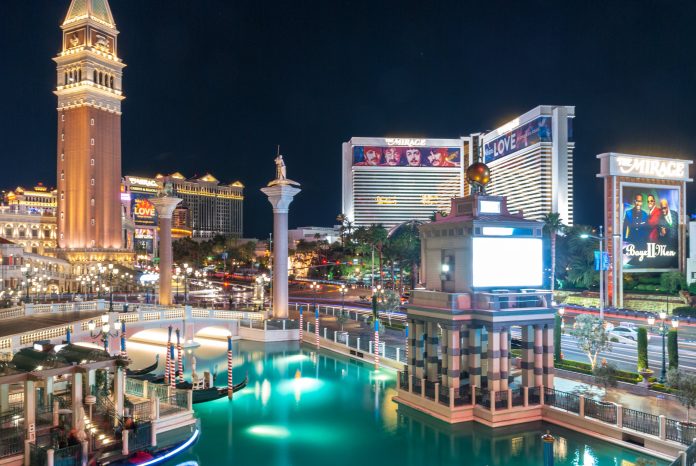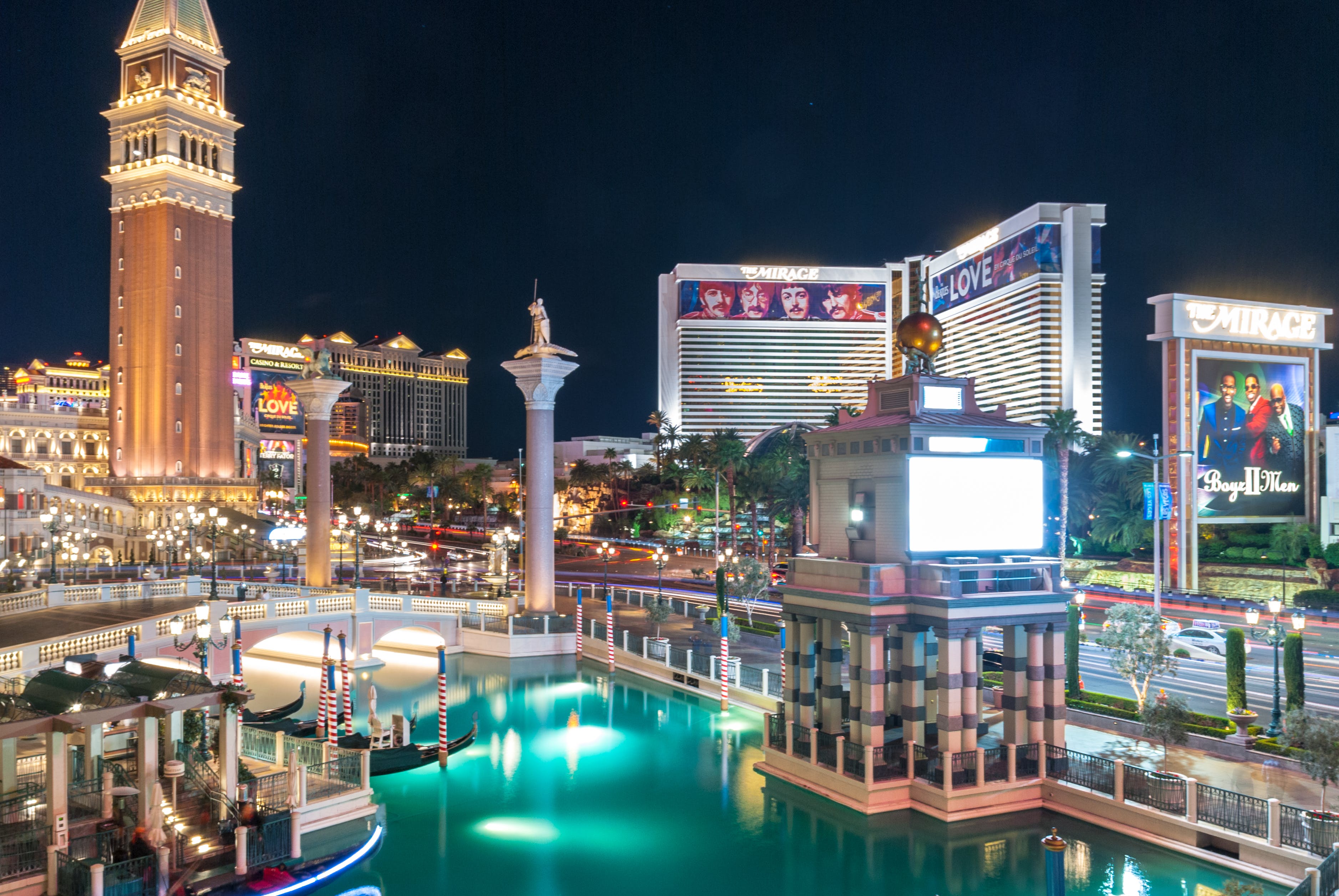Las Vegas is a city in the heart of the hot Mojave Desert. It has long been the centre of gambling. Here everywhere you can see numerous gaming pavilions and casinos. Each hotel offers its own variety of games. In the city everything is the most: the most expensive cocktail, the biggest buffet, the biggest screen, the scariest attraction, the most interesting show.
Players have a good opportunity to find a onlinecasinos.co.uk and play at home online or come to Las Vegas where everything is designed for entertainment. Each person makes a choice according to their interests and demands.
Many well-known companies choose Las Vegas for corporate meetings, promotional events and presentations. There are no problems in realising the biggest projects here. For many hotels such services are the norm. Between games, tourists can visit nightclubs, contests, daily shows and concerts, sports competitions.
Tourist companies organise for players water, car, bus and air excursions to natural attractions. There are many interesting places in the city, and you should definitely check them out. Las Vegas is called the capital of weddings. Getting married in the city can be quick, easy and cost-effective. All types of wedding celebrations are available.
Las Vegas has a competitor – Chinese Macau. It is an asian analogue of Las Vegas with a less rich history, but dynamically developing. However, it cannot surpass the lustre of Las Vegas and its opportunities for players.
When and how Las Vegas was founded
Wikipedia says that the oasis in the middle of the desert was found in 1829. A caravan of goods was travelling to Los Angeles from Texas and got lost on the way. The travellers were exhausted and ran out of water. They stopped, and a small party went in search of a water source.
Mexican Rafael Rivera found a saving oasis with a source of water. The area was named Las Vegas, which means “fertile valleys” in Spanish. For several decades, the area was a holiday destination and a stop for trade caravans.
The impetus for the development of the territory was given by its visit in 1844 by John Fremont, who in the near future became a senator from California. He led an expedition working on behalf of the Army Corps of Engineers. His expedition established a stronghold here, used from 1846-1848 in the U.S.-Mexican War. This was the time of the entry of new states into the United States. A downtown city street was later named after him in Fremont’s honour.
In 1855, about thirty Mormons came to the valley. They bought land from the Indians and established a small settlement. In 1857 they left the area. After the defeat of the war with the government, all the Mormons were expelled.
The beginning of development
Las Vegas received the status of a city in 1905. By this time, this settlement was already quite lively. It operated variety shows and dance parlours. For a long time the city was a major railway junction.
Now there is no passenger railway service through the town. The name of the Main Street Station Hotel is a reminder of times gone by. It is located next to the railway junction and old carriages turned into a museum and cafe.
Nevada at that time was known as a state of great opportunity. It hosted speedy weddings and brutal fights with cash rewards. These events were impossible elsewhere. As early as 1905, saloons and gambling halls filled the streets of the city. Entertainment in them was spiced with alcohol fumes, cigarette smoke, bickering and fights.
In 1909, the authorities tried to crack down on gambling. However, gambling entertainment became a habitual way of life for people. As a result, games became underground, clubs – closed. Harsh measures were not successful, and in 1911 they were weakened. Card games were allowed, which did not require players to pay entry fees. In addition to gaming in Las Vegas flourished dance parlours, variety shows and other similar entertainment.
Major relaxations were made in 1915. In the casino allowed to install slot machines, allowed to diversify the set of card games. Winnings on slot machines of that time were given alcoholic beverages or cigars. The changes made to the laws became the basis for the development of the gambling industry. However, in 1919 gambling was banned. This had a negative impact on the city’s economy.
During the “Prohibition” in the 1920s, the city became one of the centres of illegal alcohol trade. After the completion of the highway linking the city to California, a flood of illicit liquor enthusiasts poured into the city. Members of various criminal organisations flocked to the city, attracted by the big money. The people of Nevada began to talk about the withdrawal of Las Vegas from the state.
The beginning of prosperity
In 1931, gambling entertainment in Nevada was again allowed. Due to the laws passed, the authorities began to encourage people to gamble. Elsewhere in the US, gambling was actively prohibited at this time. The authorisation of gambling took place thanks to Mr Tobin, a good citizen. He had never gambled in a casino. Tobin stated that the income from the gaming business could be sent to solve many financial problems.
The casino introduced blackjack, roulette, faro, craps and other games still popular today. Opened access to new slot machines that can interest the most fastidious customers. Small betting shops could be seen next to the gambling houses. At one time gambling was officially allowed even in prisons. They were banned in these institutions only in 1967.
Since then, the owners of gambling establishments were taxed. The basis for its calculation were the tables, the number of slot machines, the types of games. One part of the tax amount (75 per cent) went to the city budget and the other (25 per cent) to the state treasury. As a result, corruption, tax evasion, and concealment of casino business became the norm.
National Geographic magazine describes the Mojave Desert as an area with a hot, dry climate. Normal city development in the lifeless desert terrain required the provision of power and water supplies. In 1931, a large dam began to be built near the city. The construction was finished in 1936.
The emergence of the Maud Reservoir and the construction of the hydroelectric power plant solved the issues of energy and water supply for many years. Las Vegas began to be built at a faster pace, new gambling houses were opened in it. Hotels offering gambling entertainment gradually began to occupy their niche. Already in 1940 in the city visited about 9 thousand players. The population in this year reached 16 thousand people.
After 1940, there was a sharp increase in population. Gambling houses began to shift to the motorway connecting the city with Los Angeles. Casino owners realised more and more interesting projects. Raymond Smith first in the head came up with the idea to erect a gambling house near the motorway. In front of his establishment was arranged car park with a large number of places for cars. Before that, gambling halls were usually arranged in back rooms and cellars.
Raymond Smith created a new marketing concept and invented “mouse roulette”. A frightened animal would run out of a hole in the centre of the roulette. The mouse would thrash around in the cauldron and the excited audience would freeze in anticipation. Sooner or later the mouse would stop at some number.
The booming of Las Vegas
From 1945 onwards, organised crime, in particular Bugsy Siegel, had a great influence on the development of the gaming business. He opened his first Nevada casino, the Flamingo, in 1946. The press was sceptical of his endeavour. They wrote that the gangster Bugsy Siegel is burying money in the desert sand. They considered Bugsy’s idea to be an oddity.
However, the project became a successful endeavour. In other states, control over the games was tightening, and in Las Vegas they were gaining momentum. Thousands of people began to come to the city to play.
At first, the Flamingo was a loss-making venture, but the leaders of organised crime correctly assessed the potential of Las Vegas. New casinos and hotels began to open in the city. Already in 1954 in Las Vegas visited 8 million people.
The tradition to interest tourists not only in games, but also in other entertainments began to form. In the 50s, Sinatra, Presley and other famous artists performed here. Business owners began to emphasise first-class service and fine cuisine. There was a construction boom in the city. More and more people were coming to Las Vegas, and more casinos were needed.
In the 50’s, nuclear bomb testing began near Las Vegan at a test site. It seems strange now, but at the time the opportunity to see the atomic “mushroom” attracted even more tourists here.
Bugsy Siegel – who is he?
The real name of the criminal figure is Benjamin Siegelboim. He was born in the Jewish quarter of New York. In the neighbourhood lived Chinese, Irish, Italians. They were all united by poverty. The young gangster began his criminal career with theft and racketeering. He followed it up with a stint in Hollywood.
Bugsy is a slang nickname for “crazy.” However, the underworld figure was courteous to women, dressed well, was friends with many Hollywood celebrities. He was killed by his partner and also gangster Luciano. He accused Bugsy of embezzling funds in the construction of the casino.
Respectable Las Vegas.
In the 60s, Las Vegas was freed from the power of the mafia. This became possible thanks to the active position of the city’s residents. Organised journalistic investigations became the reason for the dismissal of corrupt officials.
The eccentric Howard Hughes, one of the richest people in the USA, had a great influence on the development of the city during this period. In 1966 he settled in the city and gradually bought up many hotels, casinos, local radio stations and TV companies. It was thanks to Hughes that Las Vegas became respectable and stopped being a mafia town in public opinion.
In the 70s, the city experienced an active population growth. It was explained by the rapid development of the city and the growth of immigration to Nevada. However, the popularity of the city among tourists decreased. Some players moved to open casinos in Atlantic City, in addition, gambling was legalised in New Jersey.
Las Vegas needed a change, and it happened. In the 80s, the era of huge entertainment complexes and mega-hotels began. They were usually dedicated to one theme, offering something special. This led to the city becoming the entertainment capital of the world. It is one of the most attractive places for tourists.
Las Vegas continues to develop consistently, attracting more and more tourists. It is recommended to come here after visiting the World Casino Directory. This site provides information about casinos all over the world, including Las Vegas. In this city in the hot desert you can not only play, but also have fun in other ways. It is important to discover all the possibilities and take advantage of them.




